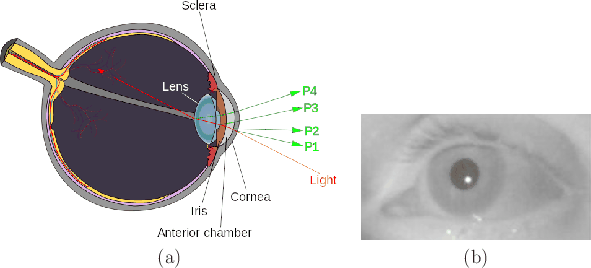
Next: Forward kinematics Up: 9.4 Tracking Attached Bodies Previous: 9.4 Tracking Attached Bodies Contents Index
Eye tracking systems been used by vision scientists for over a century to study eye movements. Three main uses for VR are: 1) To accomplish foveated rendering, as mentioned in Section 5.4, so that high-resolution rendering need only be performed for the part of the image that lands on the fovea. 2) To study human behavior by recording tracking data so that insights may be gained into VR sickness, attention, and effectiveness of experiences. 3) To render the eye orientations in VR so that social interaction may be improved by offering eye-contact and indicating someone's focus of attention; see Section 10.4.
 |
Three general categories of eye-tracking approaches have been developed [64,346]. The first is electro-oculography (EOG), which obtains measurements from several electrodes placed on the facial skin around each eye. The recorded potentials correspond to eye muscle activity, from which the eye orientation relative to the head is determined through filtering. The second approach uses a contact lens, which contains a tiny magnetic coil that causes a potential change in a surrounding electromagnetic field. The third approach is called video oculography (VOG), which shines IR light onto the eye and senses its corneal reflection using a camera or photodiodes. The reflection is based on Purkinje images, as shown in Figure 9.18. Because of its low cost and minimal invasiveness, this is the most commonly used method today. The contact lens approach is the most accurate; however, it is also the most uncomfortable.
Steven M LaValle 2020-11-11